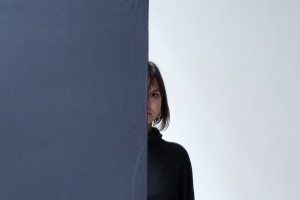This issue’s theme was born from an obvious observation. Even though it reached the age of consecration, the 80s generation of visual arts doesn’t have the same public recognition (or knowing) like that of literature, which generated the (disputed) concept of the literary eighties. Although it produced concepts of its own like the “neo-expressionism” or the “intermedialism”, along with the famous and controversial “postmodernism”, the 80s generation of visual arts doesn’t seem to be a “front” as coherent and compact as its literary counterpart.
In the post-communist upheaval of the 90s and in the economic boom of the 2000s, the visual eighties artists placed themselves in between the mature generation that kept control over several levers of institutional power, and the young and very young generations that knew the privilege of new foundations, centers, galleries and curators that showed up in the meantime, either in the country or abroad, always looking for “alternative art”.
As opposed to their literary brothers who had a sufficiently abundant exegesis and a sort of “classification” in these last 20 years, all because literature was predominant in the Romanian cultural field, the eighties practitioners of visual art had to make due in difficult work conditions and make up inconvenient and atypical professional trajectories, oscillating between working within the country and working abroad, all this while having the most unusual side jobs. This is why the fulfilment of their art is less evident. It is true that the eighties artists had a small appetite for public life. They appeared to be marked by a psychology of marginalization, perhaps coming from behavioral reflexes inherited from before 1989. Even though they were hard working and productive, assuming discreet roles on the institutional stage while building solid careers, the way the visual eighties artists were seen suffered, not cause of the coming together of their own works, but because of the wide cultural reception of their art. And still, the 80s generation of visual arts has a few big names, some of which known abroad, that deserve to be recognized by the wider audience, at least as much as the literary artists. Here are some of these artists in no particular order: Dan Perjovschi, Ioana Bătrânu, Iosif Kiraly, Marilena Preda-Sânc, Dan Mihălţianu, Mircea Roman, Călin Dan, Miklos Onuscan, Petru Lucaci, Romelo Pervolovici, Marian Zidaru, Gheorghe Rasovszky, Ion Aurel Mureşan, Christian Paraschiv, Ștefan Râmniceanu, Alexandru Păsat, Vioara Bara, Rudolf Bone, Alexandru Antik, Marcel Lupșe and other that are present in the pages of this issue.
The file dedicated to the eighties generation “revisited” after 20 years was coordinated by Magda Cârneci and Adrian Guță, two of its critics and theorist that published books on this matter. The list of artists in this issue is not comprehensive, overlooking names of painters (Gheorghe Ilea, Mihai Chioaru, Andrei Chintilă, etc), sculptor (Vlad Aurel, Mircea Popescu, etc), graphic artists (Mircea Stănescu, Dorel Găină, Gheorghe Urdea, etc) and decorative artists (Daniela Făiniș, Titu Toncian, Ilie Rusu, Simona Tănăsescu, Mihai Țopescu, etc), that we hope to present in future issues. It remains to be seen whether this approach to make a compact presentation of the eighties artists will offer the public a sufficiently coherent image of “the visual eighties” and if it will be an incentive, a dare even towards newness, evolution, or if this is the beginning of a “classicization”.
Magda Cârneci, Editor-in-chief
POSTED BY
Cristina Bogdan
Founder and editor-in-chief, between 2014-19, of the online edition of Revista ARTA. Co-founder of East Art Mags, a network of contemporary art magazines from eastern and Central Europe. Runs ODD, a s...
www.evenweb.org

